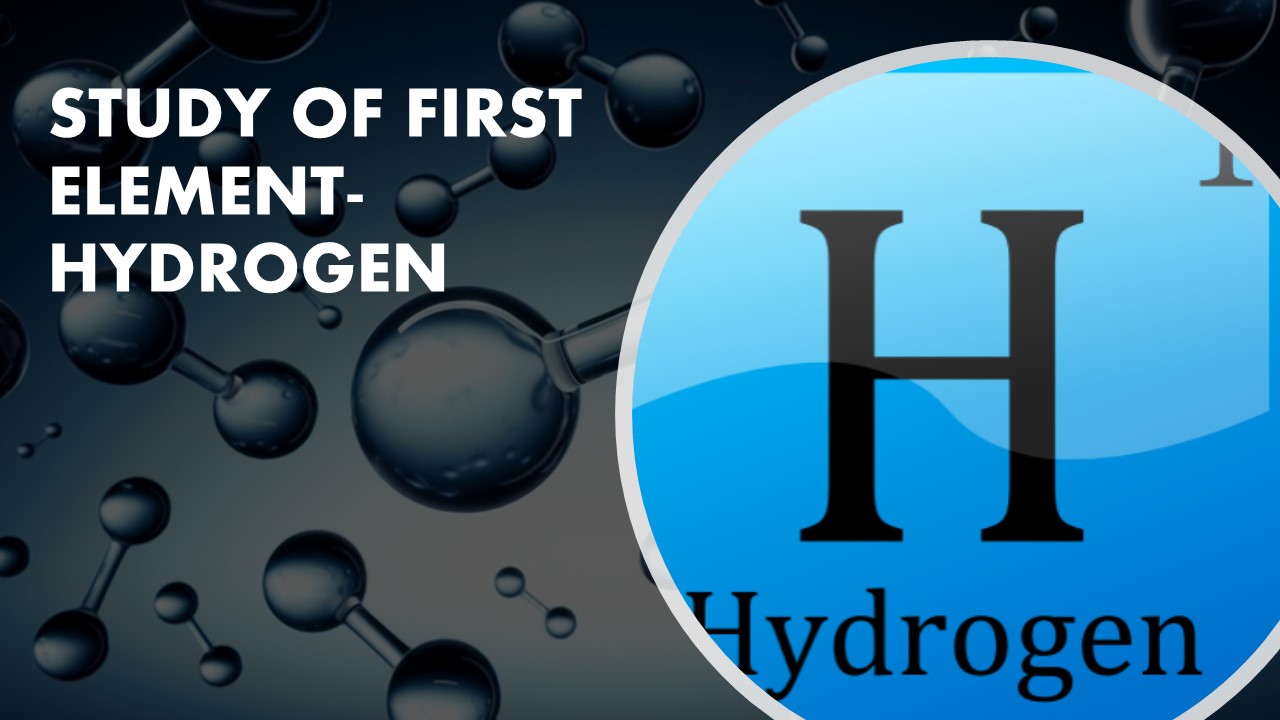STD IX – STUDY OF FIRST ELEMENT – HYDROGEN – IX ARCHIMEDES
About Course
In this section will learn the following chapters:
1.INTRODUCTION
2.Hydrogen from: water, dilute acids and alkalis.
3.Preparation of Hydrogen
Last Updated:February 15, 2024
0 (0 Ratings)
Share Course
Page Link
Share on social media

Description
Position of the non-metal (Hydrogen) in the periodic table
Hydrogen, H2, is the simplest element. It is the first element in the periodic table, and it is placed in Group I of the periodic table.
Some previous attempts have been made to classify hydrogen as Group 1 (Alkali metal) or as group 7 (halogen), but neither were satisfactory.
Hydrogen is the lightest element and the most abundant element in the universe.Its atom consists of just a proton and an orbiting electron.
Without hydrogen we would not be here; all organic compounds making up living things contain hydrogen and it is also a constituent of water, necessary for all known life.
Hydrogen is therefore arguably the most important element for life.
Lab Preparation of Hydrogen
Since hydrogen gas is almost insoluble in water, it can be collected by displacement of water. It is not collected by downward displacement of air because it forms an explosive mixture with air.
Impurities and their removal
Hydrocarbons are the major source for the production of hydrogen gas, by, for instance, reforming of fossil fuel, natural gas, or biomass. However, the hydrogen produced by this process is not pure, but a mixture of gases known as reformate.
Manufacture of hydrogen by Bosch process
Bosch process:
In this method, water gas is mixed with twice its volume of steam and passed over heated catalyst Fe2O3 in the presence of a promoter Cr2O3 at 773 K when CO2 and H2 are obtained.
Manufacture of Hydrogen from water [ Electrolysis]
Commercially hydrogen is obtained by the “electrolysis” of acidulated water.
A small amount of ulphuric acid (H2SO4) is added to water because pure water being a poor conductor of electricity, and adding a less volatile acid makes it a conductor.
Electric current is passed through this acidulated water and the water dissociates.
Test for Hydrogen
Hydrogen is combustible but does not support combustion. A hydrogen–air mixture burns with a characteristic ‘pop’ sound. Pure hydrogen burns silently in the air with a pale blue flame.
Using a flame is the best method of testing for the presence of hydrogen. When using the flame test, hydrogen comes into contact with oxygen, creating hydrogen oxide. This process is called oxidation.
Free
Free
Free access this course
-
LevelIntermediate
-
Total Enrolled2
-
Last UpdatedFebruary 15, 2024
Hi, Welcome back!
Material Includes
- 🔥 Live Interactive classes with in-class doubt solving
- ⭐ Weekly Test and Quiz with instant tracking for progress
- ⚙️ Revision of the course after testing
- 👋 Fortnightly Parents and Tutor interactions
- 🌷 Expert monitoring of student's learning progress
- 👨👩👧👧 Daily communication over call, whatsapp and mail
- 💻3 hours on-demand video
- ✍4 downloadable resources
- ⌛Access for entire Academic Year
- 📱Access on mobile and Desktop
- 📋Assignments and review of the same
- 💡Tests and Correction by Board paper checkers
- 🏅Certificate of completion and Live tracking with Grade book
Course Duration:
0
Course level:Intermediate
Enrolled:2
About Course
In this section will learn the following chapters:
1.INTRODUCTION
2.Hydrogen from: water, dilute acids and alkalis.
3.Preparation of Hydrogen
Course Curriculum
INTRODUCTION
-
[PPT] [RHEA] INTRODUCTION – SUPPORT MATERIAL – OCCURACE
01:21 -
[PPT] RHEA] INTRODUCTION – SUPPORT MATERIAL – POSITION IN PERIODIC TABLE
00:34
LAB PREPARATION
-
[PPT] RHEA] LAB PREPARATION – SUPPORT MATERIAL – HYDROGEN LABORATORY PREPARATION – BY ACTION OF WATER OR STEAM ON METAL AND ACTION OF DILUTE ACIDS OF ACTIVE METALS
03:13 -
[PPT] RHEA] LAB PREPARATION – SUPPORT MATERIAL – PREPARATION OF HYDROGEN BY ELECTROLYSIS
03:09
PHYSICAL AND CHEMICAL PROPERTIES
-
[PPT] RHEA] PHYSICAL AND CHEMICAL PROPERTIES – SUPPORT MATERIAL – CHEMICAL PROPERTIES COMBUSTIBILITY AND ACTION WITH LITMUS
01:14 -
[PPT] RHEA] PHYSICAL AND CHEMICAL PROPERTIES – SUPPORT MATERIAL – CHEMICAL PROPERTIES – ACTION ON NON METALS OXYGEN AND CHLORINE
01:21 -
[PPT] RHEA] PHYSICAL AND CHEMICAL PROPERTIES – SUPPORT MATERIAL – CHEMICAL PROPERTIES HYDROGEN AS A REDUCING AGENT
00:32
HYDROGEN – REDOX
-
[PHYSICAL] RHEA] HYDROGEN – REDUCTION AND OXIDATION
21:02 -
[PHYSICAL] RHEA] HYDROGEN – REDUCTION AND OXIDATION WITH EXAMPLES
16:30 -
[PHYSICAL] RHEA] HYDROGEN -ACTION OF METALS ON WATER & DILUTE ACIDS WITH RESPECT TO REACTIVITY SERIES
18:11 -
[PHYSICAL] RHEA] HYDROGEN – PROPERTIES OF HYDROGEN SIMILAR TO ALKALI METALS
17:37 -
[PHYSICAL] RHEA] HYDROGEN – PROPERTIES OF HYDROGEN SIMILAR TO HALOGENS
14:25 -
[PHYSICAL] RHEA] HYDROGEN – LABORATORY PREPARATION OF HYDROGEN
20:37 -
[PHYSICAL] RHEA] HYDROGEN – PREPARATION OF HYDROGEN FROM METAL
15:31 -
[PHYSICAL] RHEA] HYDROGEN – REACTIVITY SERIES & REACTION OF METALS WITH DILUTE ACID & HOT CONC ALKALI
19:20 -
[PHYSICAL] RHEA] HYDROGEN – OXIDATION AND REDUCTION
10:57 -
[PHYSICAL] RHEA] HYDROGEN – MANUFACTURE OF HYDROGEN BY BOSCH PROCESS
14:07 -
[PHYSICAL] RHEA] HYDROGEN – RECAP OF MANUFACTURING PROCESS AND CHEMICAL REACTION OF HYDROGEN
16:06
ADDITIONAL MATERIAL
ASSIGNMENT AND DUE DATE
Student Ratings & Reviews

No Review Yet

